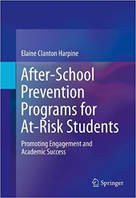A group-centered prevention program combines learning and counseling in the same after-school program. (For a more detailed explanation, see my 2013 book). Since many classroom teachers list behavior as one of the contributors to classroom failure, it is very helpful for after-school programs to combine learning and counseling.
Jones, Greenberg, and Crowley (2015) explain that students must have both cognitive and non-cognitive skills training if they are to succeed in the classroom. Cognitive skills could be identified as the skills needed to learn to read (phonemic awareness and phonological decoding). Non-cognitive skills are identified as behavioral in nature, such as not being impulsive, controlling emotional outbursts, non-bullying, non-aggressive behavior, or being attentive. Their 20-year longitudinal study shows that cognitive and non-cognitive skills must be taught at the same time. You cannot simply teach reading in the morning and social skills in the afternoon.
Using a group-centered prevention format enables you to “intertwine these cognitive and non-cognitive skills and allow the skills to be taught together at the same time. The cohesive atmosphere of a group supports learning and therapy, and the group structure makes both more effective (Baskin et al., 2010). Research further shows that reading instruction is more effective when it is combined with counseling interventions (Brigman & Webb, 2007; Huang et. al, 2005). That is why I recommend using a group-centered prevention approach together with a combined group counseling and reading instruction focus for your after-school program.
My own research has shown that (1) group-centered prevention programs are more effective than one-on-one tutoring reading sessions (Clanton Harpine & Reid, 2009), (2) group-centered prevention programs help children learn to read, even children who were failing before they entered my group-centered program (see my earlier blog for 1-5-18), and (3) group-centered prevention is a much more effective method than classroom reading groups. (I talk about my research comparing group-centered prevention techniques to traditional classroom instruction in my 2011 book).
Establishing an effective teaching method is essential to a successful after-school program. So, the first step is to select an effective group method for your after-school program. I only use group-centered prevention.


 RSS Feed
RSS Feed
